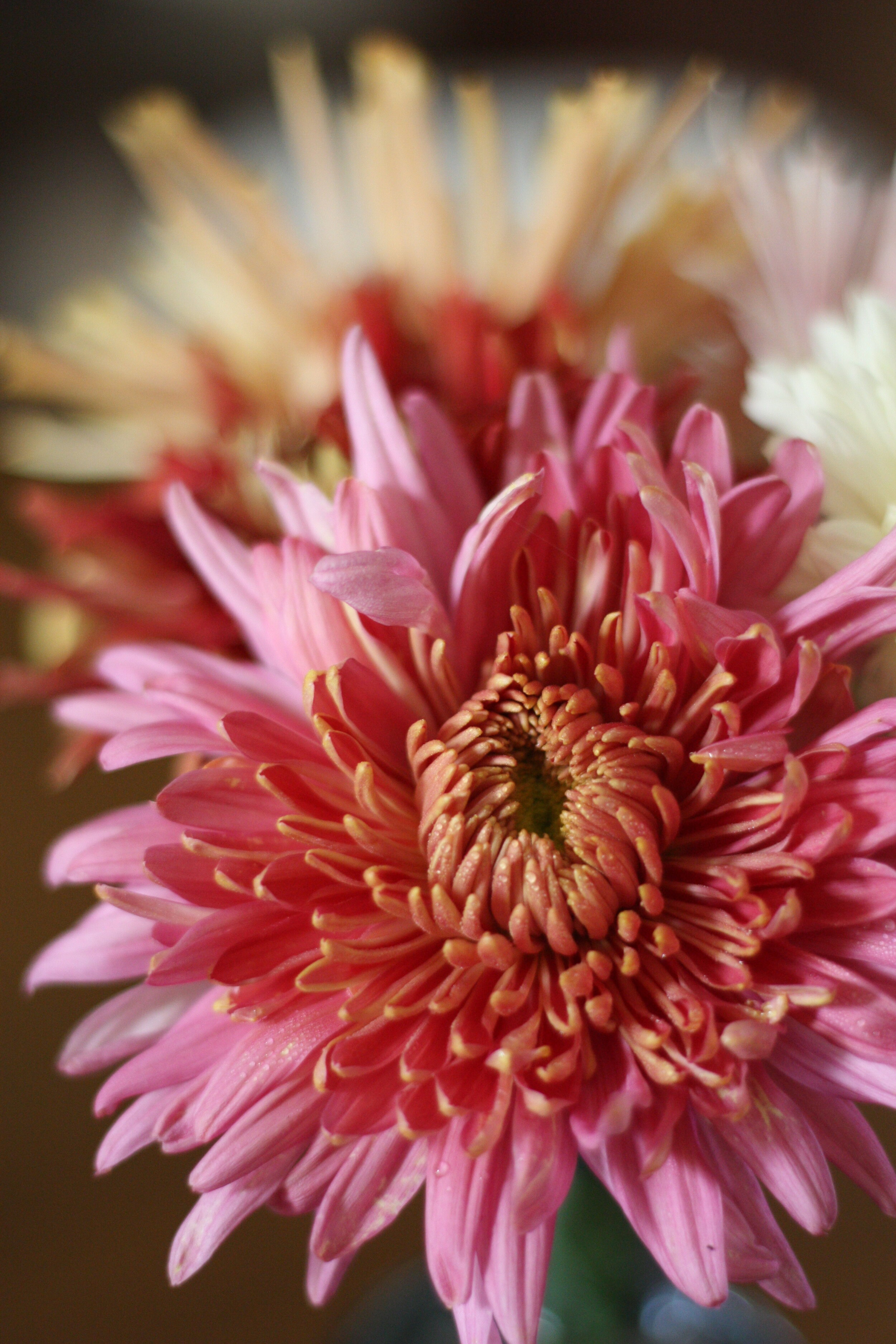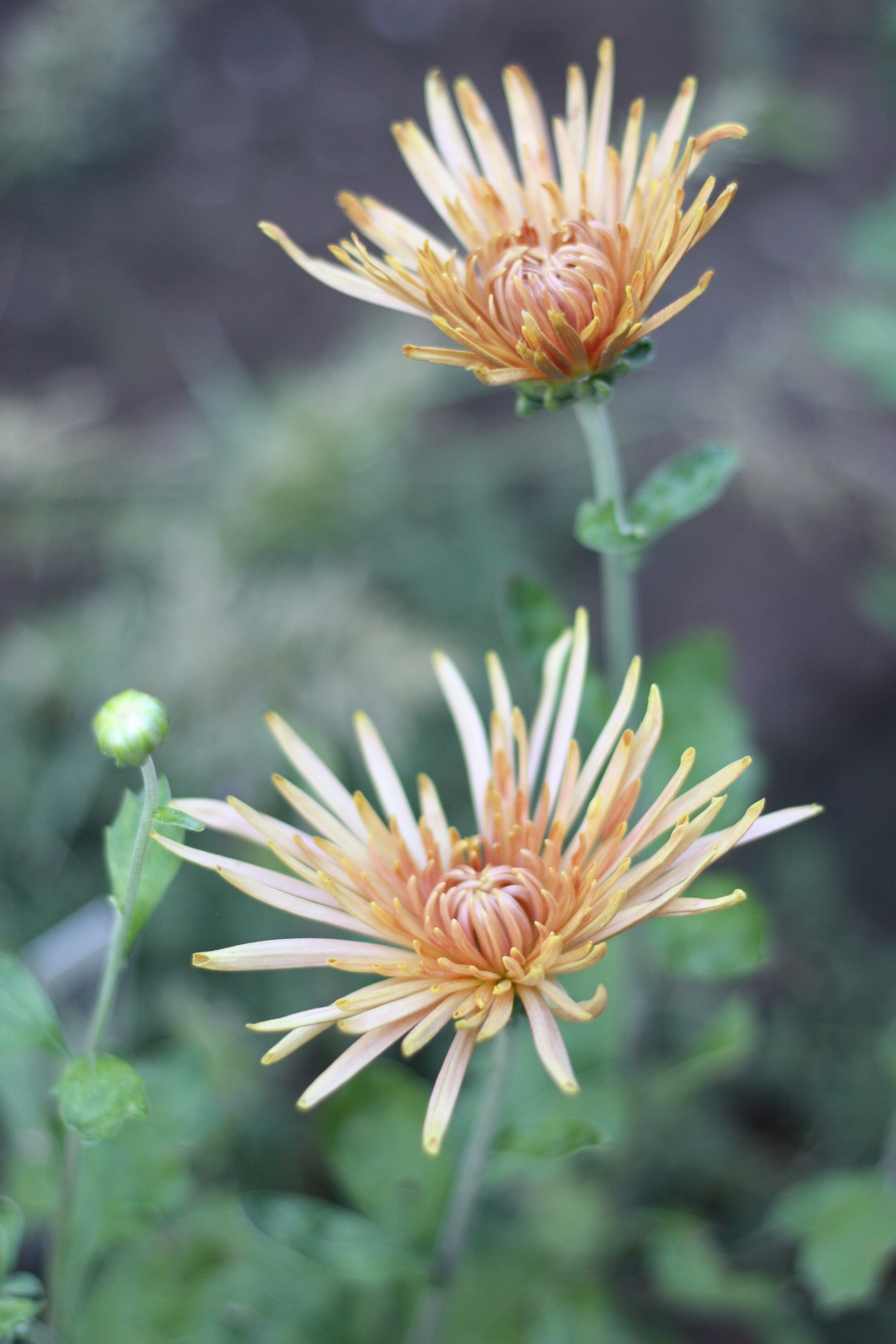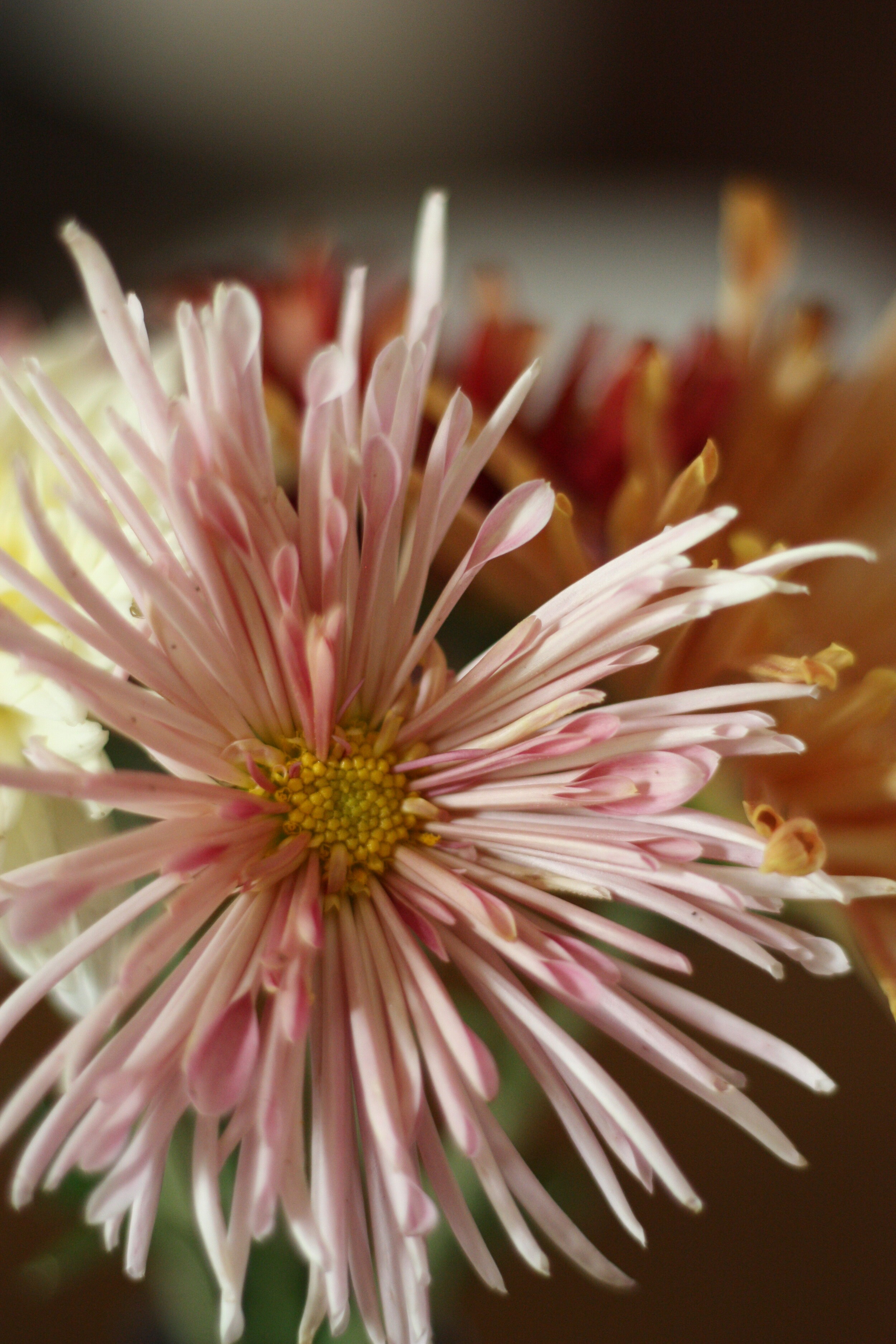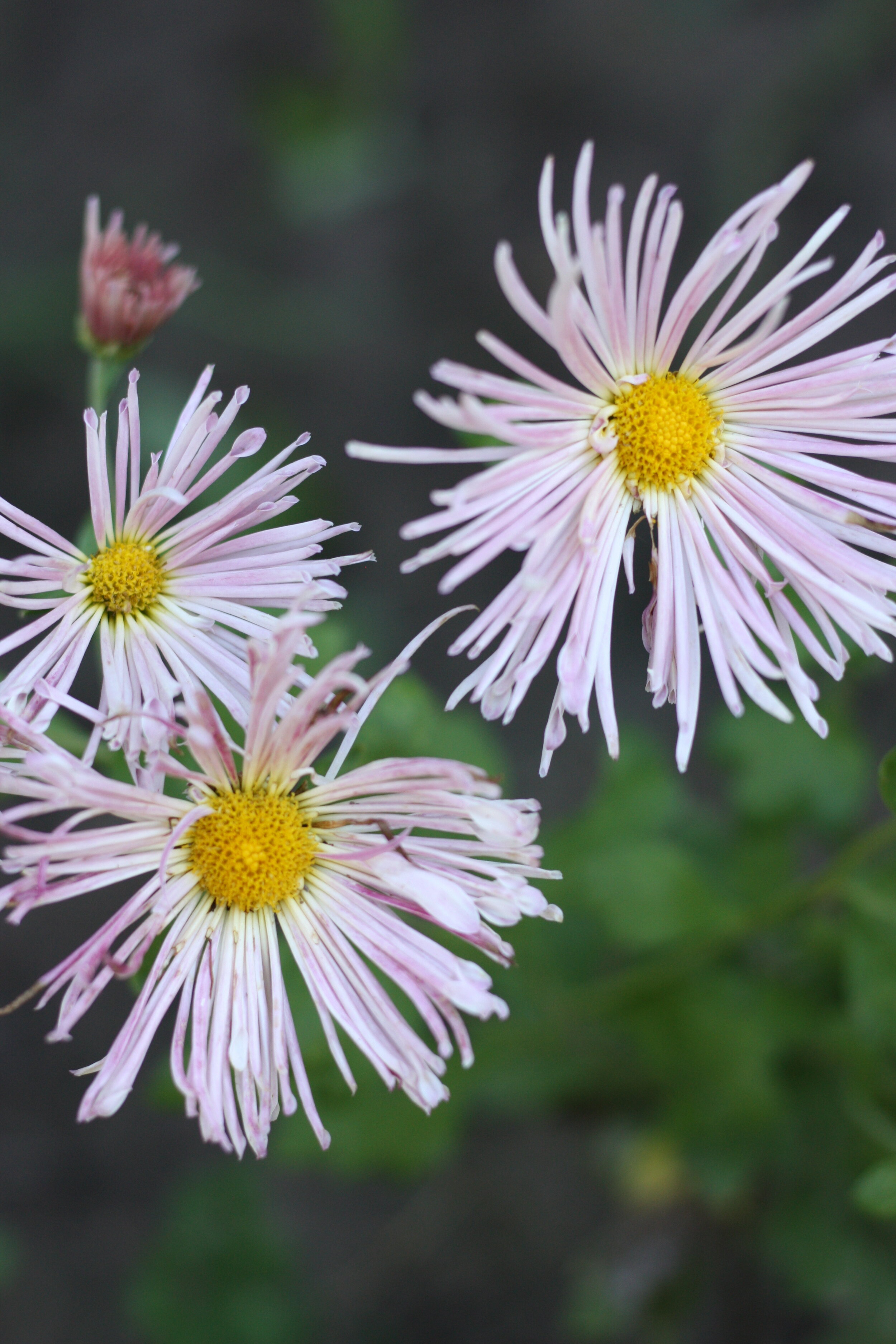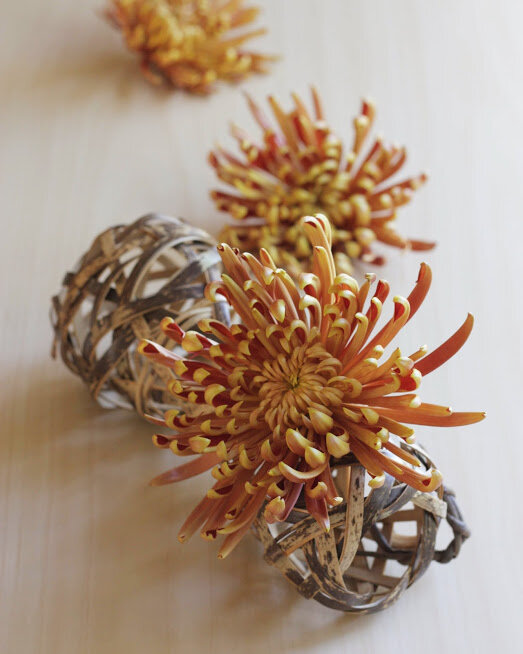How to Grow Chrysanthemums for the Garden (and Floral Design)
If you haven’t already read my post on trialing florist chrysanthemums, you might not know just how passionate I am about mums.
I really am though. Coming at a time of year when I’m usually burnt out and ready to give up on the season, they are a welcome burst of fresh floral excitement at a time of year when everything else is winding down for the season. They come in the perfect fall colors too - rust, burgundy, gold, dusky purple and rose and light pinks that are incredibly elegant and rustic.
Mums are incredibly resilient and low maintenance - I’ve neglected mine all season, literally just keeping them watered and nothing else - and they will produce abundantly for you at the end of the season, with some of their blooms easily rivaling the most beautiful dahlia as far as form and color and shape. Easy to propagate, and hardy if you give them the right conditions, what’s not to love?
As if that weren’t enough, they last forever in the vase as well - the best of our mums lasting well over two weeks with no additional care, giving you a lot of bang for your buck with this plant.
A Bit of Chrysanthemum History
Mums are readily used in both the landscaping and florist industries - the former seen in the from of pot mums, the latter as a staple in the large scale cut flower industry - so it’s a wonder that we don’t grow more of them in the garden.
Of course I’ve realized the Brits grow mums far more than we do - maybe due to their mild climate, maybe due to their passion for gardening, maybe because they don’t have the same ubuquitous mums filling cheap grocery store bouquets, maybe because they have access to beautiful varieties that we do not - but I notice that they grow them to great effect there, and I like the effect that they have on the garden and in the vase.
It’s important to point out that the mums traditionally used for cut flowers - the ones that you see in the grocery store and at the wholesaler - aren’t usually ones that you are able to find here for growing. The varieties grown by the cut flower industry are guarded so that small scale growers can’t have access to them - which is fine, because you don’t really want to compete with them as a flower farmer anyway.
1. Buy in chrysanthemums as cuttings or small plants
The only chrysanthemums you can grow from seed are the small bedding plants - to get the ones for using in floral design, you’ll have to order in actual plants or cuttings.
Chrysanthemums root very easily from cuttings, which is what a lot of people order in - you can get a giant plant in one season from one cutting. If you’re not confident in your rooting abilities, you can also order in actual plants, which will also grow readily and well over the season.
2. Root your cuttings
If you buy your chrysanthemums as cuttings you’ll need to root them before you plant them out.
To root your cuttings, fill a flat with vermiculite (or another inert, well-aerated medium) and dip the cut end into rooting hormone and then place into the vermiculite, firming the medium around the stem.
Most chrysanthemums will root very quickly in a few weeks. To see if they’ve rooted, give them a tug - if they give you resistance, they’ve rooted, and you can either pot them up or plant them out right away.
If you’ve purchased in plants, feel free to take some cuttings and root them - an easy way to ramp up your mum production!
3. Plant Out Your Mums
Mums can rot very easily during the winter if placed in poor draining soil, so if you can get them into a free-draining soil, they will do much better as far as being perennial for you. You can do this by planting them into raised beds, adding amendments to the soil to help it drain, or at least keeping them out of the more shallow parts of your yard to keep the warmer.
Dig a hole to place your transplant in, and plant your mums so that the top of the rootball is at ground level, packing the soil around them firmly. Give them a good deep water, watering them every other day if they’re going in during a hot period of the year.
4. Grow Out Your Mums
To ensure you get a lot of stems off your mums in the fall will require good planning and foresight in your part. You’ll need to give them at least a pinch or two in order to get them to branch out and produce more flowers, but depending on your growing season you can pinch them out as much as you’d like - up until the deadline of July 4th.
Why July 4th? Most mums are going to need the time period between July 4th and their flowering time (usually September through October) to get nice and tall and start creating good buds. If you pinch them after July 4th, they will usually end up blooming on short stems - definitely not what we want as far as being able to use them as a good cut flower.
Note: You can then take the pinched portions off and root those cuttings to create even MORE mums. How fun is that?
5. Keep Your Mums in a Shady Area
Mums start flowering when the hours of daylight start decreasing - which is why they start flowering in fall. You may even get some odd flowering in the spring when the light levels are equally as short, so don’t freak out.
In order to simulate an “earlier” fall ( by decreasing the hours of daylight) I plant the mums where they get a little bit of shade. It’s not a lot of shade - still full sun by all means and gets over eight hours of daylight - but eventually they start to get a bit more shade a bit less sunlight and start blooming earlier than they would be out in the open.
It’s important not to let any other lights shine on them. It could be a street light, an outdoor light triggered by a motion sensor, anything that could disrupt their lighting cycles - because then you won’t get blooms.
6. Harvesting
When mums start to show buds, it will take a while before they start blooming. Those buds seem to take a couple weeks to really form and get ready and start to open, but when they do - you’re in for a treat!
Florist mums are traditionally shipped with small little tubes made of netting that are slide over the unopened bud to keep them intact during shipping. You can cut the flowers when they are just starting to open up for the longest vase life and to ensure you can protect them from rain and wind damage.
Strip the lower foliage and place into cool water for a couple hours to condition them, and then you can use them for floral design, mixed bouquets, or even just enjoyed on their own in a bud vase.
7. Overwintering Mums
I’ve specifically chosen mums that are hardy to at least winter zone 5 because I want them to be perennial. Most mums don’t have an issue overwintering here due to our relatively mild and dry winters, and we don’t really put ours under any cover.
On the other hand if you live where the winters are wetter or more extreme, cover would be a good idea. You can do this by heavily mulching the plants with leaf litter or straw, or covering them in Agribon or low tunnels to protect them from the wind and freezing. As mentioned, having a freely-draining soil that they are planted in will help a lot to ensure their root systems don’t rot over the winter.
If you live in an area that mums won’t be hardy - or if you just want to make sure - an unheated hoophouse will allow you to overwinter them well. Many growers I know keep their mums in the hoophouses to protect them not just from the cold, but the rain and wind that are so prevalent this time of year that can batter and damage blooms. You can even lift plants and plant them in the hoophouse - just ensure they don’t dry out over the winter.
If you don’t have space to overwinter your mums, you can also take cuttings and overwinter them under lights or on a windowsill. They’ll look terrible come the spring - but you can start them over the same way and grow them out the following year.
If you’re not growing mums, you should be
Their long vase life, beautiful forms, ease of cultivation and hardiness and steadfastness as a plant make them an invaluable addition to the garden and to the flower farmer’s arsenal as a cut flower.
Because they don’t need the same attention as needier plants like dahlias or lisianthus, I love including them due to their low maintenance. It’s nice to be able to grow something for a change that doesn’t need coddling or prayers to grow well.
I particularly love wrapping up the season with them - they are a welcome way to end the growing season with a bang.
If you’re looking for good varieties of mums to grow as cut flowers, check out the Florist Chrysanthemum Trial we did this past year.
If you’re wanting to grow lots of cut flowers and are new to flower farming, read this post before you get started.
